
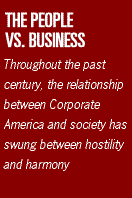
TIMELINE
Reprinted with permission by BusinessWeek
Copyright 1996 The McGraw-Hill Company Inc.
All Rights Reserved
DATA: ALFRED D. CHANDLER JR.
AND RICHARD S. TEDLOW. THE COMING
OF MANAGERIAL CAPITALISM; BUSINESS WEEK
1880-1900
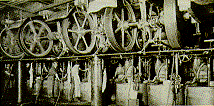 Rapid industrialization in sugar refineries and elsewhere challenges an economy rooted in agrarianism and individual enterprise. Big monopolies are born. A raft of anti-Big Business literature appears.
Rapid industrialization in sugar refineries and elsewhere challenges an economy rooted in agrarianism and individual enterprise. Big monopolies are born. A raft of anti-Big Business literature appears.
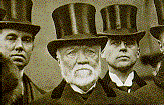
1892
While unions expand, 12 men are killed as steelworkers strike the Homestead Steel Works, owned by Andrew Carnegie (center). Labor violence spreads to railroads and mining.

1912
Woodrow Wilson is elected with an antibusiness mandate. Two years later, he creates the Federal Trade Commission to regulate "unfair" business practices.
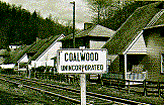
1920s
The "welfare capitalism" movement induces employers to provide their workers with housing, such as Coalwood in West Virginia, as well as education, pensions, and stock.
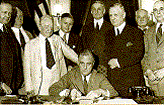
1930s
The Depression rocks faith in business, and union membership triples. Franklin Roosevelt regulates securities markets and banks; signs bills strengthening workers' rights.

1950s
The Postwar boom. Employment and workers' wages rise steadily along with corporate profits. America's love affair with consumerism- and the automobile-begins.

1960s
Unprecedented merger activity marks the "go-go" years. But the government steps up environmental and social regulation, sparked by such episodes as Love Canal.

1980s
Mike Milken cometh. Hoping to ward off hostile bids, employers start to slim down, asking workers to sacrifice in return for a later payback. Workers generally accede.

1990s
The payback never arrives. Instead, globalization stokes the restructuring of American industry. Pat Buchanan and others ride the new antibusiness wave.
FRONTLINE / WGBH Educational Foundation
|
|